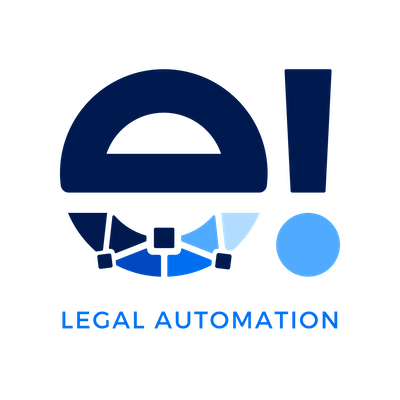Legal teams have a lot of work to do, and many tasks can be time-consuming and repetitive. Automating some of these activities can free up lawyers’ time to focus on more important tasks. However, not all tasks can be automated, so legal teams need to carefully determine which activities they can automate and which ones they should continue doing manually.
This blog post will provide you 6 steps to identify the workflows which should be automated.
To find the most effective legal automation for your business, start by reviewing tasks you do frequently. There are likely certain tasks that can be automated to help you work more efficiently. Also explore how other companies have used it successfully, there could be key learnings to apply to your own company. It’s important to remember that automation is not the answer to every problem, but it can be a valuable tool when used correctly.
It’s important to take the time to understand your pain points and needs before trying to come up with a solution. By doing this, you will be able to better prioritize ideas and select the right technology that will help you succeed. Remember that technology is often a crucial part of the solution, but it is not the whole solution itself.

1. Determine pain points
A clear vision of your team’s pain points is essential for problem-solving success. To identify them you can use the questions below:
- What activities use the most of your time?
- Do you have sufficient resources to focus on tasks that matter more?
- Are there any chores which could be reduced or eliminated, and why?
- What are the most common inquiries from internal and external stakeholders, and how can they be addressed efficiently in the future?
2. Discuss identified pain points
Work with your team in a collaborative environment and gain deeper insight into the responses to strengthen your understanding of the identified pain points.
Gather common answers, investigate the procedures that produce frustrations, tasks that obstruct progress, performance, or production. Make sure your team members participate by adding details to clarify each pain point.
3. Gather feedback from a broader range of teams
At this stage, will be important that other teams involved in the identified pain point processes share their experience. By doing this, you will get a better understanding of the impact of your pain points. Examine all your findings together for areas that could benefit from improvement.
4. Discuss the requirements to find a solution
After a close evaluation of your business’s pain points and improvement opportunities, it’s time to start strategizing what the best solution would look like.
At this point, we must think about all the elements that are necessary for successful implementation. To identify the keys for improvement, we suggest you to use the following questions:
- What must the solution be able to accomplish?
- Are specified needs essential to resolve the initial pain point?
- How would you evaluate success to make sure each pain point is satisfied?

5. Determine automation potential
Now, is the moment when you start thinking about automation possibilities. Some of the problems you described may be remedied through automation, while others might require a different approach.
The opportunities
To identify automation opportunities that can help drive process efficiencies and achieve cost savings, we recommend focusing on tasks or scenarios occurring with a regular frequency. We suggest avoiding investments in automated solutions to manage individual cases, as it likely won’t justify the resources required. For tedious activities occurring only sporadically throughout the year, however, technology investment may not be necessary.
Automation can improve a wide range of workflows, for example:
- Streamlining the onboarding process by instituting management and triage of FAQs,
- Optimizing approvals and handover workflows.
- Standardizing documents for self-service across departments.
- Applying risk scoring to prioritize tasks based on internal playbooks.
The analysis
Before taking the step to invest in automation, it is essential that you create a business case to demonstrate the value of your proposed solutions. Analyze everything from time and cost investment requirements, efficiency gains and other positive outcomes such as improved client satisfaction or increased revenue growth potential. Put simply, ensure each action taken has a clear business benefit for long-term success.
6. Recognize the importance of time and create a list of automated use cases
In this last step, you must focus on prioritizing individual pain points within your team, this is a key imperative in gaining approval and successful implementation of solutions. Weigh up which aspects are most frequent, causing the greatest friction for it to form an effective business case that exceeds expectations. Comprehension of costs, benefits and solution requirements further amplifies this process by providing you with the tools necessary to understand where best-allocated resources can deliver optimal results.
With your business cases prioritized and the most promising solutions identified, you are now ready to pursue those opportunities with a suitable technology partner. Unlocking this automation potential promises great rewards!

Implementing your legal automation use cases
When deciding what to automate, it is essential to assess your company’s current processes and identify areas of improvement by working in tandem with different teams. Upon selecting the desired use cases, you must make sure that the technology for proposed solutions meets standards. To ensure a successful transition, delegate tasks within internal departments as part of pre-implementation planning.
If your organization is tempted to integrate the potential of automation, let us help you explore how workflow automation can boost company efficiency, meet compliance standards, and reduce risk exposure. Book your demo today!






